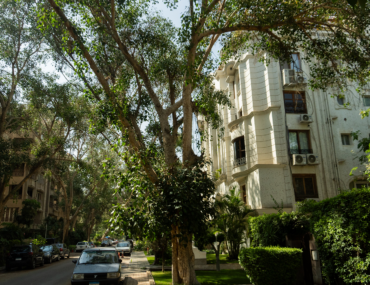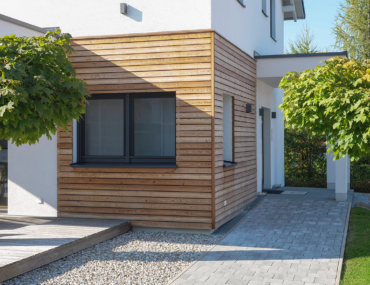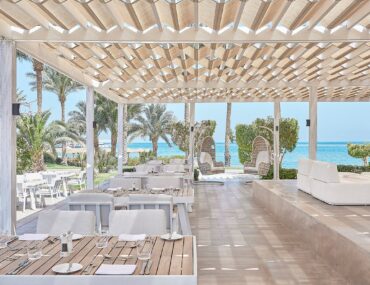Over the past few years, Egypt has embarked on an ambitious infrastructure build-out: new metro lines, monorails, extensions, road upgrades, ring roads, better highways. These improvements are having ripple effects in the real-estate market, and nowhere is that more visible than in compounds—residential developments that bundle homes/apartments with shared amenities and security. In this article, we explore how transport infrastructure is changing the real estate equation, what compound buyers and investors should watch, and where opportunity lies.
The Transport Infrastructure Upswing: What’s New
Here are some of the recent and ongoing transport infrastructure projects:
- Metro expansions: Egypt is studying, planning, or beginning multiple metro‐line extensions. For example, a feasibility study was signed to extend Cairo Metro Line 1 northwards from New El Marg toward Shebin El-Qanater.
- New Metro Line 6: Planned to connect northern and southern Cairo, stretching about 34 km with around 26 stations. This aims to relieve pressure on older metro lines and improve network flexibility.
- Modernisation of existing lines: The Cairo Metro Line 1 is being upgraded under a large contract to improve capacity, safety, power, signalling, and station infrastructure.
- Monorail projects: Cairo’s monorail lines—two major ones under construction—will connect the New Administrative Capital to east Cairo, and 6th of October to Giza, significantly cutting travel times.
These transport projects are part of larger national goals: easing traffic congestion, linking new urban developments (especially satellite cities and new capitals), improving commuter satisfaction, and supporting economic growth.
How Transport Drives Real Estate Values & Appeal in Compounds
The “roads + metro/monorail” factor isn’t just about commuting—it changes how people choose where to live, how developers plan, and how compounds are positioned and priced. Here’s how:
- Accessibility & Commute Time Reduction
Compounds that were once considered “far out” are now viable for daily commuting. When metro or monorail stations are nearby (or a few minutes away), residents save time and stress and gain access to city centres, schools, workplaces. This makes compounds more attractive to working professionals and families who value convenience. - Premiums on Property Prices Near Transit Hubs
Properties located close to metro stations or major roads tend to command price premiums over those further away. Buyers are willing to pay extra for convenience. - Compound Development Strategy Adjusts
Developers factor transport infrastructure into their master planning more than ever. When transport is coming (metro line, monorail, ring road), compounds are designed or marketed with that in mind: ensuring entrance/exit roads align with major arteries; securing plots that will benefit from future transit; creating walkable paths to the stations; adding amenities that appeal to buyers who will use transit. - Increased Interest in Peripheral / New Communities
As central Cairo becomes denser and more congested, both buyers and developers are shifting focus toward newer, outer districts or satellite cities. Metro/monorail and road expansions make these areas more connected. Compounds in places that were historically under-served can see rapid value appreciation when infrastructure catches up. - Enhanced Livability & Social Value
Good roads, well-connected transit, less time in traffic = better quality of life. That’s increasingly a selling point. Compounds that offer green spaces, amenities, security, coupled with shorter and safer commutes, attract not just local buyers but expats, investors, and those seeking second homes.
Real Effects: Evidence From Recent Data
- Residential property prices in Egypt rose between 20% and 30% in the first half of 2025, with bigger jumps in prime districts and well-connected locations. Part of this growth is driven by improved infrastructure and transport access.
- In 2024, properties close to metro stations in Cairo saw an average premium of about 15% compared with similar properties further away. This reflects buyer preference for transit-adjacent living.
- The opening of Line 4 of the Cairo Metro and Line 3 (Phase III) has already influenced real estate demand in the zones they serve, pulling investment outward from the city center.
What This Means for Compounds (Buyers & Developers)
Given these infrastructure shifts, here are the implications for those building, buying, or investing in compounds:
- Location is more critical than ever: Proximity to future (and existing) metro/monorail or major road arteries should be a major criterion. Even if a compound is well-designed, if getting to the centre is slow or difficult, demand will lag.
- Future-proofing matters: Buyers should check not only what exists now, but what is planned. For example: Is there going to be a new metro stop, monorail link, or road expansion that will serve that area in 3-5 years?
- Developer credibility & execution: Look for developers who have experience with integrating transport and compound design: good road access, internal roads, pedestrian and last-mile connections, shuttle services, etc.
- Pricing vs. potential: Compounds in areas poised to benefit from new transit often offer better upside. The current price may be lower due to perceived remoteness, but that gap can shrink rapidly once transport infrastructure commences operation.
- Amenities and mixed-use features become differentiators: As commuting becomes easier, buyers expect more: retail, clinics, schools, green spaces inside compounds, ease of access to stations. These boost both desirability and resale value.
Where Opportunity is Strongest (Hot Spots for Compounds)
Based on current metro and road plans, potential compound hot spots are:
- Areas along the new or extended Line 4 of Cairo Metro and zones that will have access to it.
- New Administrative Capital zones tied to the monorail lines, or that are being connected via new road arteries.
- Satellite cities or suburbs that are slated for improved transport (both metro/monorail and major roads).
- Districts where metro/monorail or station extensions are in feasibility or early-planning stages, as prices there tend to be favorable now with strong growth potential.
Conclusion
Egypt’s infrastructure transformation—via major metro line extensions, monorail projects, and road upgrades—serves as a powerful engine reshaping the real estate landscape. For compounds, this means more than just location: it’s about being connected, accessible, and delivering value that matches modern expectations for mobility.
For buyers, staying informed about what’s planned (and when), choosing compound developments with real transport advantages, and looking for value in emerging areas are key. For developers, anticipating transit maps, ensuring internal connectivity, and positioning compounds as integrated, accessible living spaces will be a winning strategy.
And for anyone looking to explore the best compounds across Egypt, Bayut makes the search easier by providing up-to-date property listings, insights, and guidance to help you find a home that combines modern comfort with excellent connectivity.



